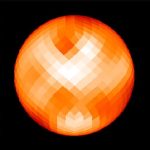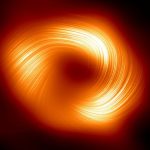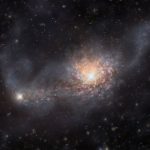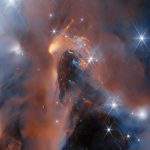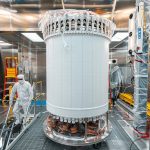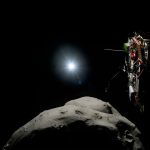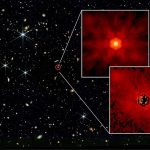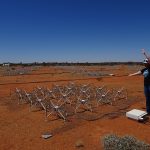Scientists discover spotted surface on the North Star
Researchers have uncovered fascinating new details about the North Star, also known as Polaris.
This famous star, which has long been used for navigation, turns...
Dark matter could have driven the growth of early supermassive black holes
The James Webb Space Telescope (JWST) keeps finding supermassive black holes (SMBH) in the early Universe.
They’re in active galactic nuclei seen only 500,000 years...
Galactic collision from 12.8 billion years ago could create a “monster” galaxy
Astronomers have made an exciting discovery: they’ve spotted two galaxies in the process of merging, a cosmic event that happened 12.8 billion years ago.
This...
Webb discovers six new “rogue worlds” that provide clues to star formation
Rogue Planets, or free-floating planetary-mass objects (FFPMOs), are planet-sized objects that either formed in interstellar space or were part of a planetary system before...
Scientists discover dark matter’s elusive nature in groundbreaking experiment
Scientists are getting closer to understanding dark matter, one of the biggest mysteries of the universe, but it’s proving to be more elusive than...
Scientists develop new algorithms to boost safety of autonomous spacecraft
Space may seem like a vast emptiness, but in reality, it's filled with countless objects that can pose dangers to spacecraft.
Imagine spending years designing...
What if you flew your warp drive spaceship into a black hole?
Warp drives have a long history of not existing, despite their ubiquitous presence in science fiction.
Writer John Campbell first introduced the idea in a...
Life needs black holes to survive
Life is rare, and it requires exactly the right environmental mix to establish itself. And there’s one surprising contributor to that perfect mix: gigantic...
Did dark matter help create giant black holes in the early universe?
Supermassive black holes, like the one at the center of our Milky Way galaxy, take an incredibly long time to form.
Typically, a black hole...
Scientists begin first search for alien technology in distant galaxies using low-frequency signals
For the first time, scientists are searching for signs of alien technology in galaxies far beyond our own, using low-frequency radio waves.
This groundbreaking study,...

